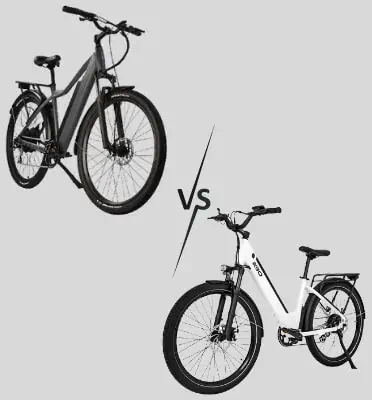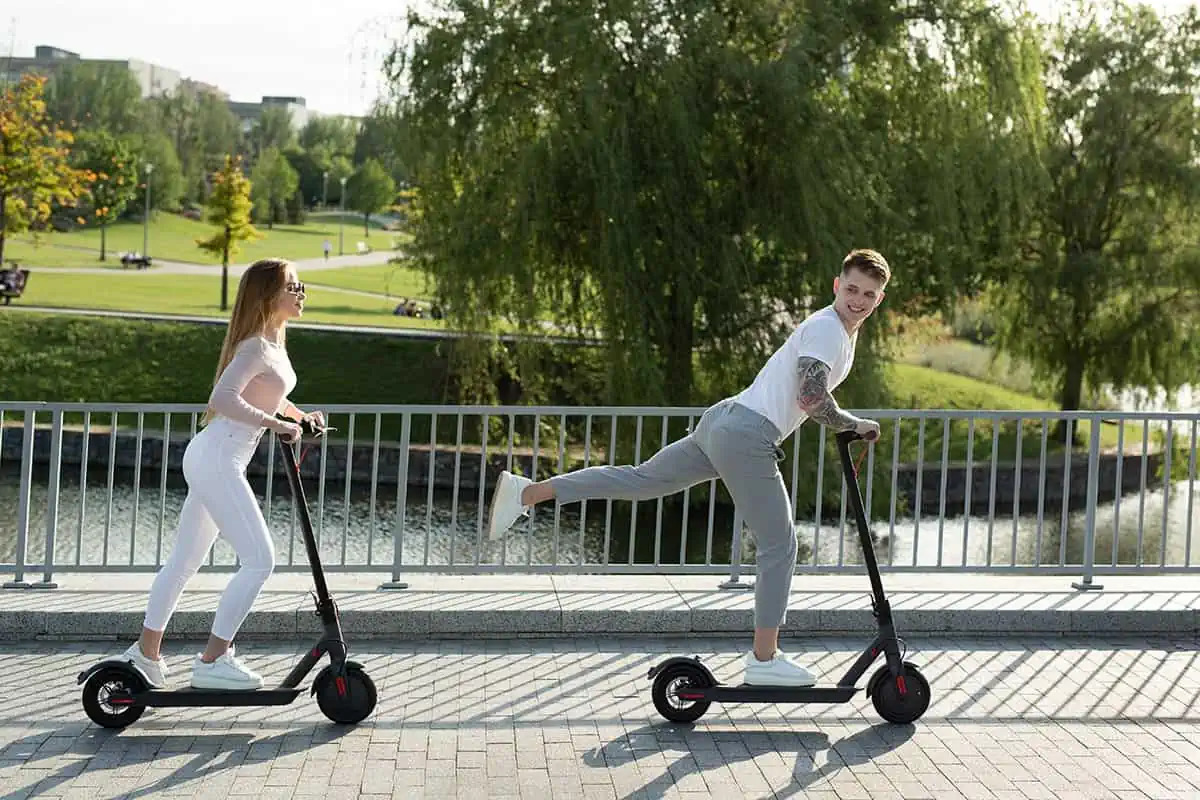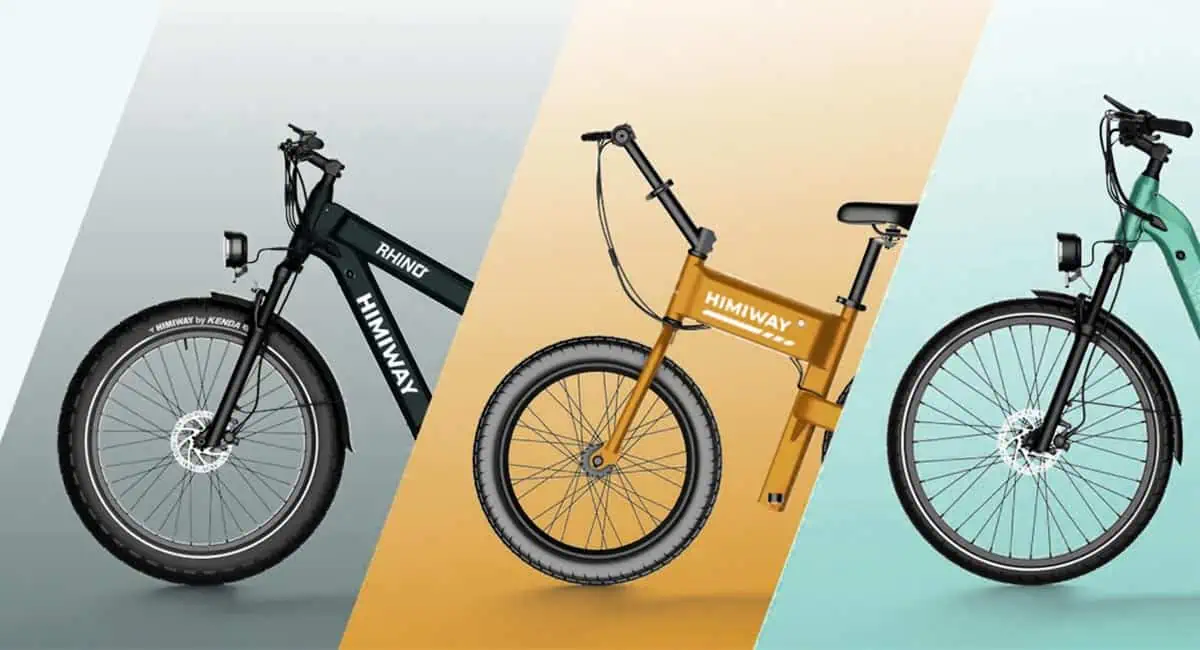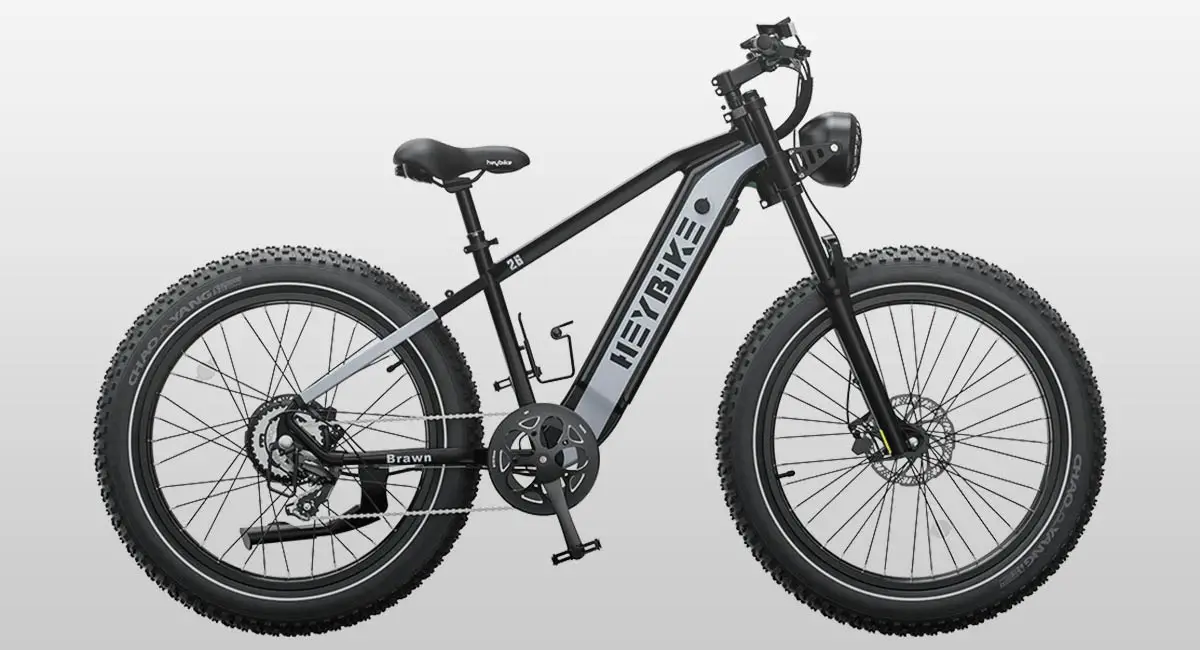If you’re considering either the Ride1Up 500 or the KBO Breeze ST, you should know what factors will influence your decision when choosing one over the other. Both e-bikes have a lot of features that make them great rides.
They each come with accessible frames and are very comfortable to ride. When it comes to speed and power, the Ride1Up 500 comes out on top. However, it comes with smaller disc brakes than the Breeze and isn’t packed with as many utilities. The KBO Breeze commuter electric bike wins in this department.
In this post, we’ll go through the pros and cons of each bike so you can make an informed decision about which one suits your riding style better.
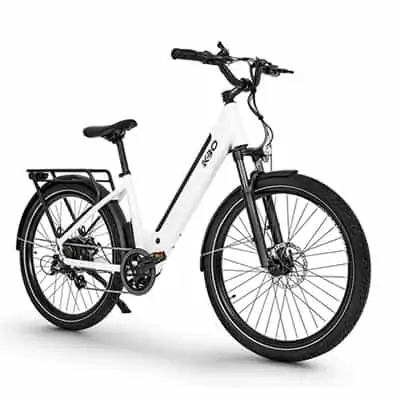
KBO Breeze Step-Thru
Overall Rating:
- Riders Weight Limit | 300 lbs (136 kg)
- Motor | 500W Geared Hub Motor
- Range| Up to 30- 55 Miles per Charge
- Battery| 48V, 16Ah Lithium-ion Battery
- Speed | 20 MPH
VS
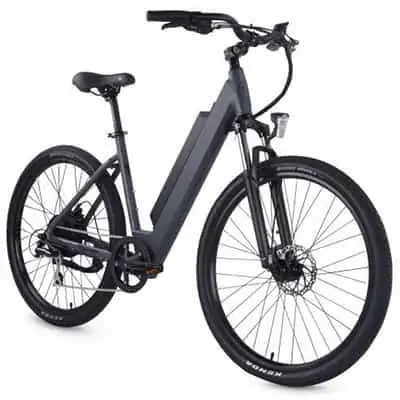
Rise1UP 500
Overall Rating:
- Riders Weight Limit | 300 lbs (136 kg)
- Motor | 750W Rear Hub Motor
- Range | Up to 25-45 Miles per Charge
- Battery| 48V, 13Ah Lithium-IonBattery
- Speed | 20 MPH
Check Amazon PriceGet 2% Off. Use Promo “ELECT01CJE”
Also Related:
KBO Breeze Step-thru Full Review
Differences Between the Ride1Up 500 Series and the KBO Breeze ST
The KBO Breeze is not for or cyclists who enjoy heavy off-road riding. It is not designed to haul heavy loads nor is it built to handle the rigors of traveling down steep trails at insane speeds.
Motor and Power
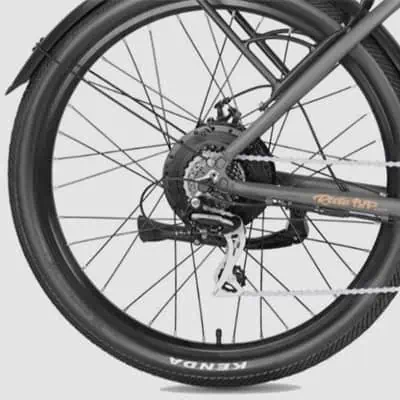
Ride1UP 500: Motor and Power
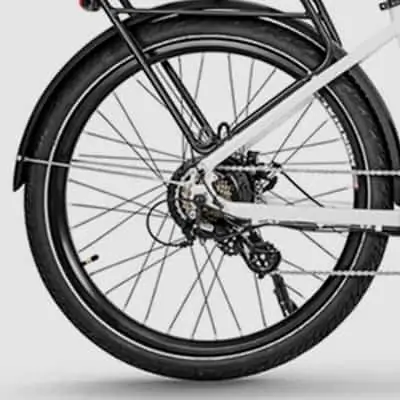
KBO Breeze ST: Motor and Power
Both electric bikes are equipped with 750W motors. However, the Ride1Up 500 is capable of outputting 750W of power for sustained periods while the Breeze is only able to put out that amount of power at peak performance.
The two e-bikes come with 48V rear-drive hub motors. The major difference between them is that the Ride1Up 500 comes with a 22 Amp controller that allows it to put out more power than the Breeze (which is limited by an 18 Amp controller).
Range

Ride1UP 500: Range
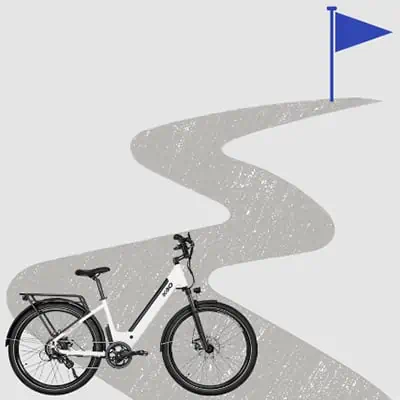
KBO Breeze ST: Range
The KBO Breeze ST comes standard with a 48V 16Ah (768Wh) Li-ion battery. This battery sits inside the bike’s down tube and can power the bike for about 55 miles before it needs to be recharged.
We were able to cover about 35 miles on the bike using just throttle and there was still a little power left in the battery. Recharging the battery takes only about 5 hours thanks to the 3 Amp fast charger included in the bike’s packaging.
The Ride1Up 500, on the other hand, is equipped with a smaller, 48V 13Ah (624Wh), battery. During our range test, the Ride1Up 500 covered a distance of 27 miles (43km) in its highest speed setting (PAS 5) before the bike’s battery ran flat.
Riders should be able to get double that amount in range if they keep motor assistance to the minimum.
Speed

The Ride1Up 500 operates as a Class 2/3 electric bike. This means that the bike can attain speeds of up to 28mph in pedal-assist mode and around 20 miles an hour in throttle-only mode.
KBO’s Breeze ST also operates as a Class 3 e-bike. However, its motor stops providing assistance once the bike clocks 22mph.
This doesn’t mean the KBO Breeze’s motor is incapable of propelling the bike to speeds exceeding that limit. The bike has been programmed to restrict current flow to the motor once it reaches a specific speed.
We tested each bike at their various pedal-assist levels, recorded their average speeds, and compiled that data into the table below.
| Pedal-assist Levels | Ride1Up 500 Series | KBO Breeze ST |
|---|---|---|
|
PAS 1 |
14 mph (22.5 kph) |
9 mph (14 kph) |
|
PAS 2 |
16 mph (25.7 kph) |
13 mph (21 kph) |
|
PAS 3 |
19 mph (30.5 kph) |
17 mph (27 kph) |
|
PAS 4 |
22 mph (35.4 kph) |
21 mph (34 kph) |
|
PAS 5 |
24 mph (39 kph) |
21 mph (34 kph) |
Also Related:
Ride1Up 700 Series vs Aventon Level – Head to Head Comparison
Performance and Acceleration
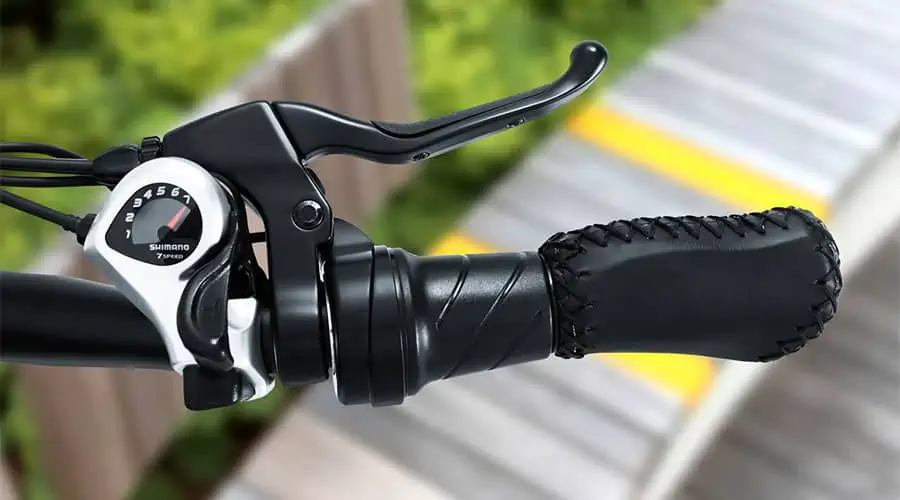
Both ebikes are pretty decent when it comes to performance.
The Ride1Up 500 comes with a thumb throttle that allows riders to engage the motor without pedaling. This throttle provides electric boosts up to 20mph irrespective of the level of pedal assistance you’re locked into.
The same can be said about the KBO Breeze. It is equipped with a half-twist throttle that overrides the bike’s natural gearing system. So, essentially, you can throttle from the lowest pedal-assist level and still get max throttle power (up to 20mph).
Using the throttle even gets you to max speed faster than pedaling in the highest gear (PAS 5). I was able to clock 20mph in just under 12 seconds (11 seconds and 77 milliseconds) using full throttle. Pedaling in PAS 5 level took me about 12.1 seconds to reach that same speed.
Climbing Ability
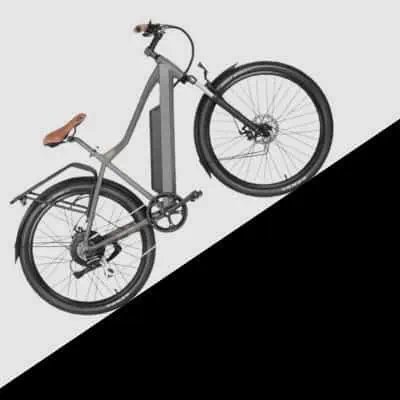
Ride1UP 500: Climbing Ability
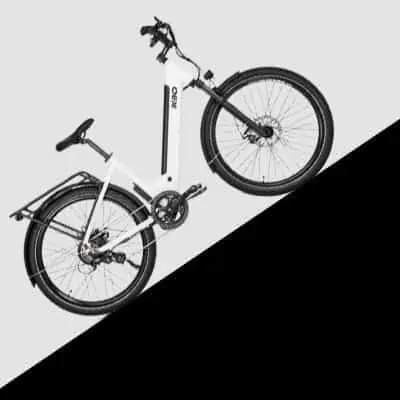
KBO Breeze ST: Climbing Ability
Both e-bikes possess decent enough hill-climbing power. While they both might struggle to travel up very steep inclines without any assistance from the rider, they should do just fine on low- to moderately-steep gradients.
Weight Limit and Net Weight
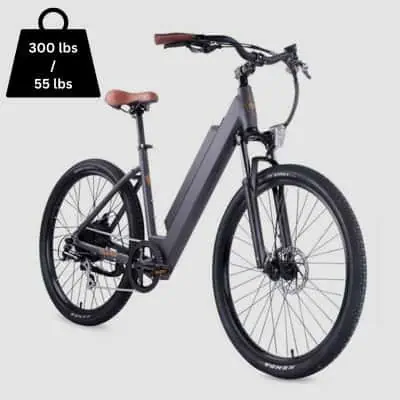
Ride1UP 500: Weight Limit and Net Weight
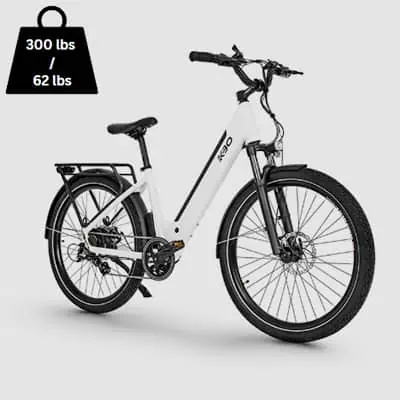
KBO Breeze ST: Weight Limit and Net Weight
The Ride1Up 500 is the lighter of the two electric bikes. It weighs 55 lbs (25kg) and is able to support up to 300 lbs (136kg) of weight while the KBO Breeze ST weighs 62 lbs (28 kg) with a max payload capacity of 300 lbs. You might think that the Breeze tips the scales at that weight however you would need to consider that the weight of the Ride1Up 500 at 55lbs is not factering in the fenders and rear rack.
Build Quality
The Ride1Up 500 Series is a well-put-together e-bike. It comes with high-end components (including a 624Wh battery with LG cells, a Shimano Acera shifter, a Selle Royal saddle, etc.) and doesn’t make any squeaking sounds while in operation.
It also handles well and doesn’t wobble under high speeds. The KBO Breeze ST is also a very solid electric bike. One might think that its lack of a top tube will make it less sturdy than a high- or mid-step e-bike, but that just isn’t the case.
The bike feels solid and the frame doesn’t flex. Like the Ride1Up 500, it’s also made from high-quality components.

KBO Breeze Step-Thru
Overall Rating:
- Riders Weight Limit | 300 lbs (136 kg)
- Motor | 500W Geared Hub Motor
- Range| Up to 30- 55 Miles per Charge
- Battery| 48V, 16Ah Lithium-ion Battery
- Speed | 20 MPH
VS

Rise1UP 500
Overall Rating:
- Riders Weight Limit | 300 lbs (136 kg)
- Motor | 750W Rear Hub Motor
- Range | Up to 25-45 Miles per Charge
- Battery| 48V, 13Ah Lithium-IonBattery
- Speed | 20 MPH
Check Amazon PriceGet 2% Off. Use Promo “ELECT01CJE”
Also Related:
RadRunner 2 vs RadRunner Plus | Worth the Upgrade?
Display and Controls
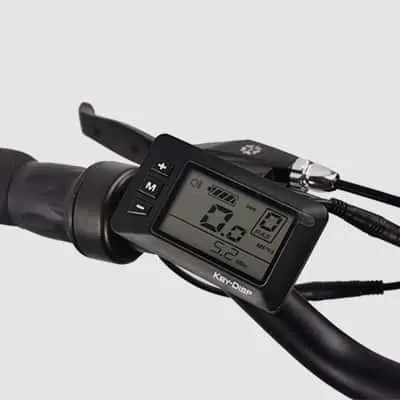
Ride1UP 500: Display and Controls
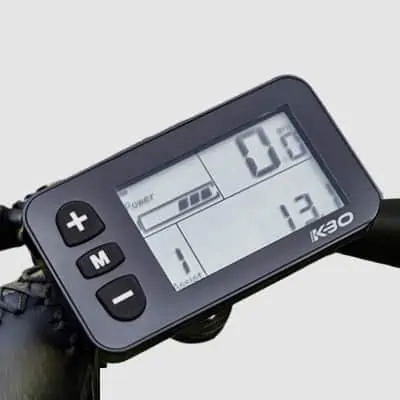
KBO Breeze ST: Display and Controls
The LCD device on the Ride1Up 500 is a bit more advanced than the display on the Breeze. Besides displaying the bike’s speed, range, battery consumption, and PAS level, the KD21C meter on the Ride1Up 500 also allows riders to add extra pedal-assist levels to the five (5) it comes programmed with and customize the motor’s output for each level.
The KBO Breeze step-through, on the other hand, comes with a decent backlight LCD that displays the bike’s speed, pedal-assist level, range, and battery strength.
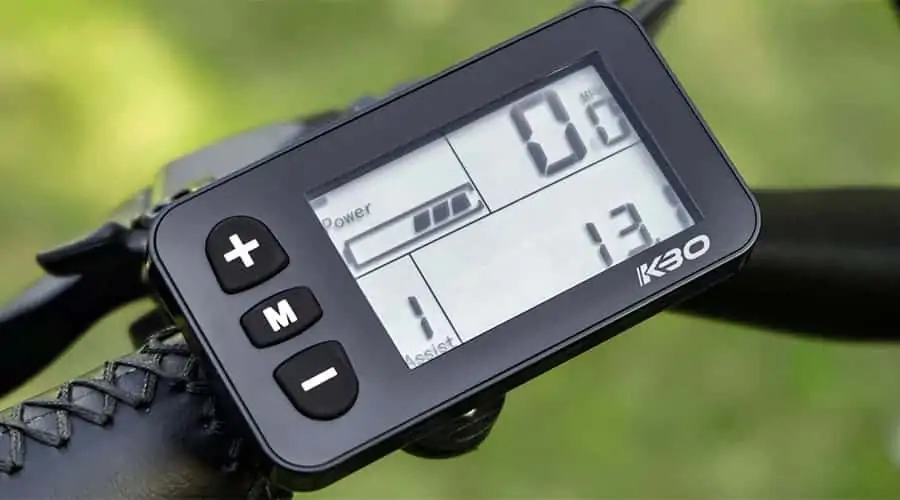
Water Resistance
Both e-bikes can be ridden under light rainy conditions. KBO doesn’t exactly specify how much protection the Breeze has against water ingress, but KBO do mentions that the bike’s electronic components “…are secured enough not to get tampered with when there is mild rain.”
In contrast, the Ride1Up 500 has a defined waterproof rating. The bike is built to the IP65 water-resistance standard, which means that its electronic components are protected against ingress from water jets projected from any angle.
Suspension and Tire
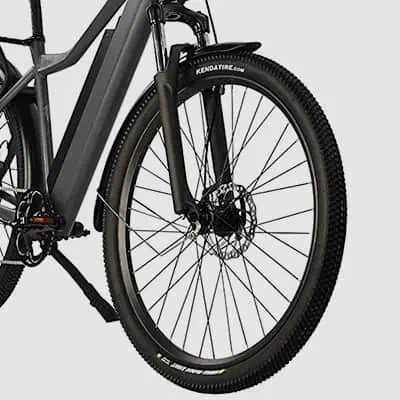
Ride1UP 500: Suspension and Tire
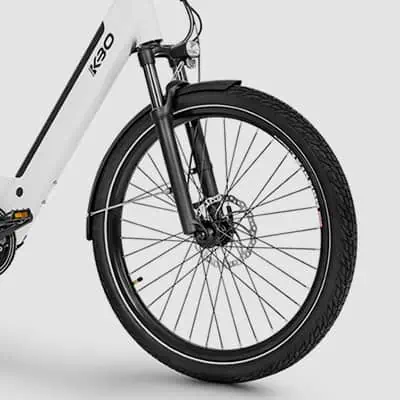
KBO Breeze ST: Suspension and Tire
The KBO Breeze’s front suspension fork has up to 80mm of travel. It also supports preload adjustment and can be locked out to increase the bike’s speed on paved roads.
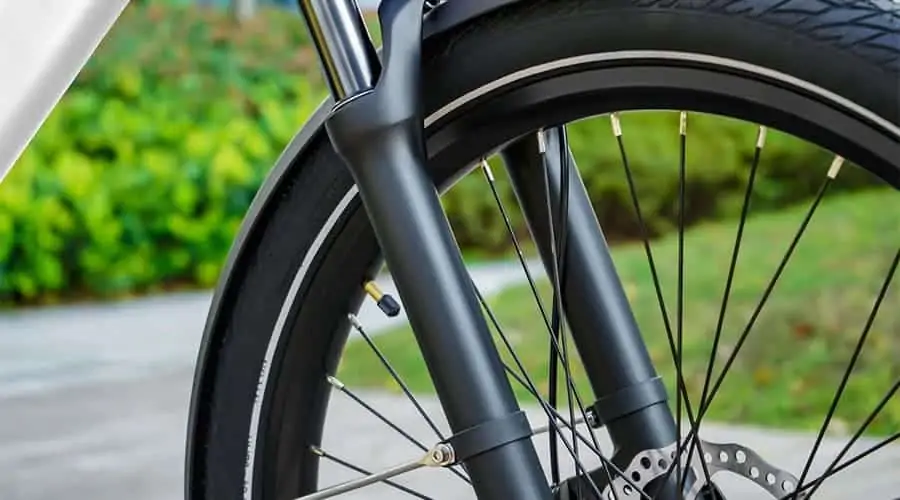
The Ride1Up 500 also comes with front suspension. Its Suntour XCT coil spring forks provide up to 100mm of travel and support preload adjustment.
They both come with street tires; the Ride1Up 500 is equipped with 27.5” by 2.2” Kenda Kwick Seven.5 pneumatic tires while the KBO Breeze comes with slightly wider Panasonic tires (27.5” by 2.4”) which is great for thoes who need extra traction and grip on the road.
Also Related:
Ride1UP 500 vs Aventon Pace 500 | Which One Wins?
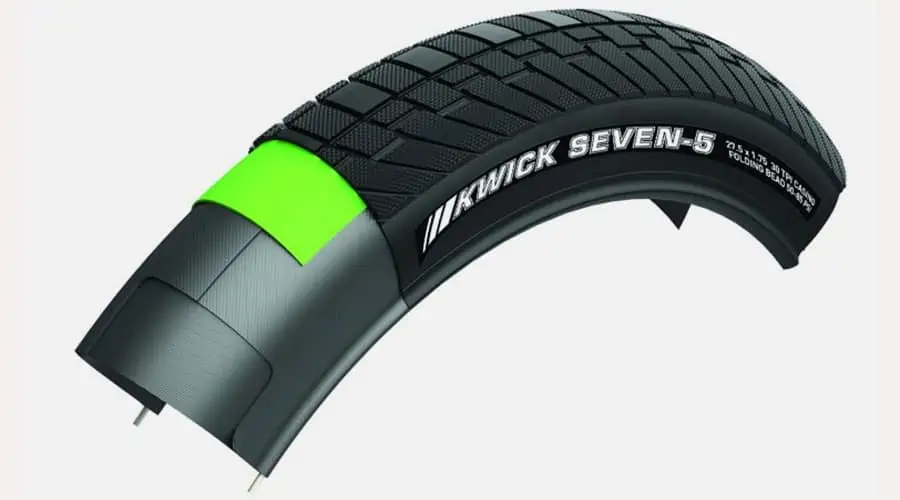
Pros and Cons of the KBO Breeze ST
Pros
- The bike’s step-thru frame makes it easy to straddle.
- It comes with a high-capacity battery.
- It comes with front & rear lights, full-length fenders, a kickstand, and a rear rack.
- The bike comes with a fast charger.
- Comes with rear rack and fenders.
Cons
- The bike is a bit heavy.
- You may not be able to go faster than 22mph unless you bypass the bike’s speed limiter.
Also Related:
Radrunner Plus vs Juiced Scorpion | Which One Should You Buy?
Pros and Cons of the Ride1Up 500 Series
Pros
- It comes with a powerful motor.
- Advanced smart control system.
- Suspension has up to 100mm of travel.
Cons
- It doesn’t come with a rear light.
- Would have been nice if the bike was actually equipped with hydraulic brakes.
- Rear rack and fenders comes at an additional charge.
Ride1Up 500 vs the KBO Breeze
| Comparison Category | Ride1Up 500 | KBO Breeze ST |
|---|---|---|
|
Motor Rating |
750W (up to 1000W peak output) |
500W (up to 750W peak output) |
|
Battery Capacity |
48V 13Ah |
48V 16Ah |
|
Brakes |
160mm mechanical disc brakes |
180mm mechanical disc brakes |
|
Estimated Range |
25 to 45 miles |
30 to 55 miles |
|
Payload Capacity |
300 lbs |
300 lbs |
|
Bike Weight |
55 lbs (Without fneders and rear rack) |
62 lbs |
|
Tires |
27.5” x 2.2” pneumatic tires |
27.5” x 2.4” pneumatic tires |
|
Throttle Type |
Thumb |
Twist |
|
Accessories/ Utilities |
Headlamp and kickstand Optional: Rear rack and fenders |
Head & tail lights, full-length aluminum fenders (front and rear), a rear rack, and a water bottle holder. |
|
Gearing System |
Shimano 8-speed system (11-30T cassette) with Shimano Acera Rapid-fire shifter. |
Shimano 7-speed system. |
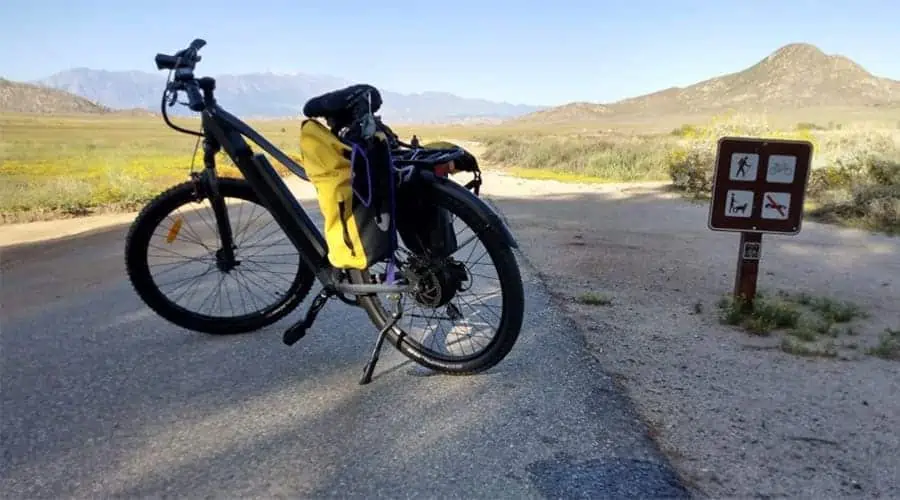
Who’s the Ride1Up 500 For
If you’re in the market for a multi-purpose electric bike, you might want to consider purchasing the Ride1Up 500. It’s great for commuting and can also take on heavier-duty tasks, like off-road riding, every now and then.
Who’s the Ride1Up 500 Not For
The Ride1Up 500 is not a lightweight electric bike. If you’re looking for a bike you can easily pick up in the middle of your commute and carry up a flight of stairs, the Ride1Up 500 is not for you.
The bike weighs over 50 lbs and its frame is unwieldy. There are lighter options you can choose from if you fall into this category of riders. The Roadster V2 is one of them.
It weighs 33lbs and comes with a 350W motor.
Who’s the KBO Breeze For
Commuters, couriers, and recreational riders will really enjoy using this electric bike. It is a powerful, sturdy, and inexpensive bike that can be ridden on multiple kinds of terrains.
The Breeze’s step-through frame design also makes it an ideal e-bike for short riders. The bike accommodates riders between 5’2” and 6’3” tall.
Who’s the KBO Breeze Not For
The KBO Breeze is not for hunters or cyclists who enjoy heavy off-road riding. It is not designed to haul heavy loads nor is it built to handle the rigors of traveling down steep trails at insane speeds.
Also Related:
Why are Electric Bikes so Expensive? Worth the Money? [Comprehensive Buying Guide]

KBO Breeze Step-Thru
Overall Rating:
- Riders Weight Limit | 300 lbs (136 kg)
- Motor | 500W Geared Hub Motor
- Range| Up to 30- 55 Miles per Charge
- Battery| 48V, 16Ah Lithium-ion Battery
- Speed | 20 MPH
VS

Rise1UP 500
Overall Rating:
- Riders Weight Limit | 300 lbs (136 kg)
- Motor | 750W Rear Hub Motor
- Range| Up to 25-45 Miles per Charge
- Battery| 48V, 13Ah Lithium-IonBattery
- Speed | 20 MPH

